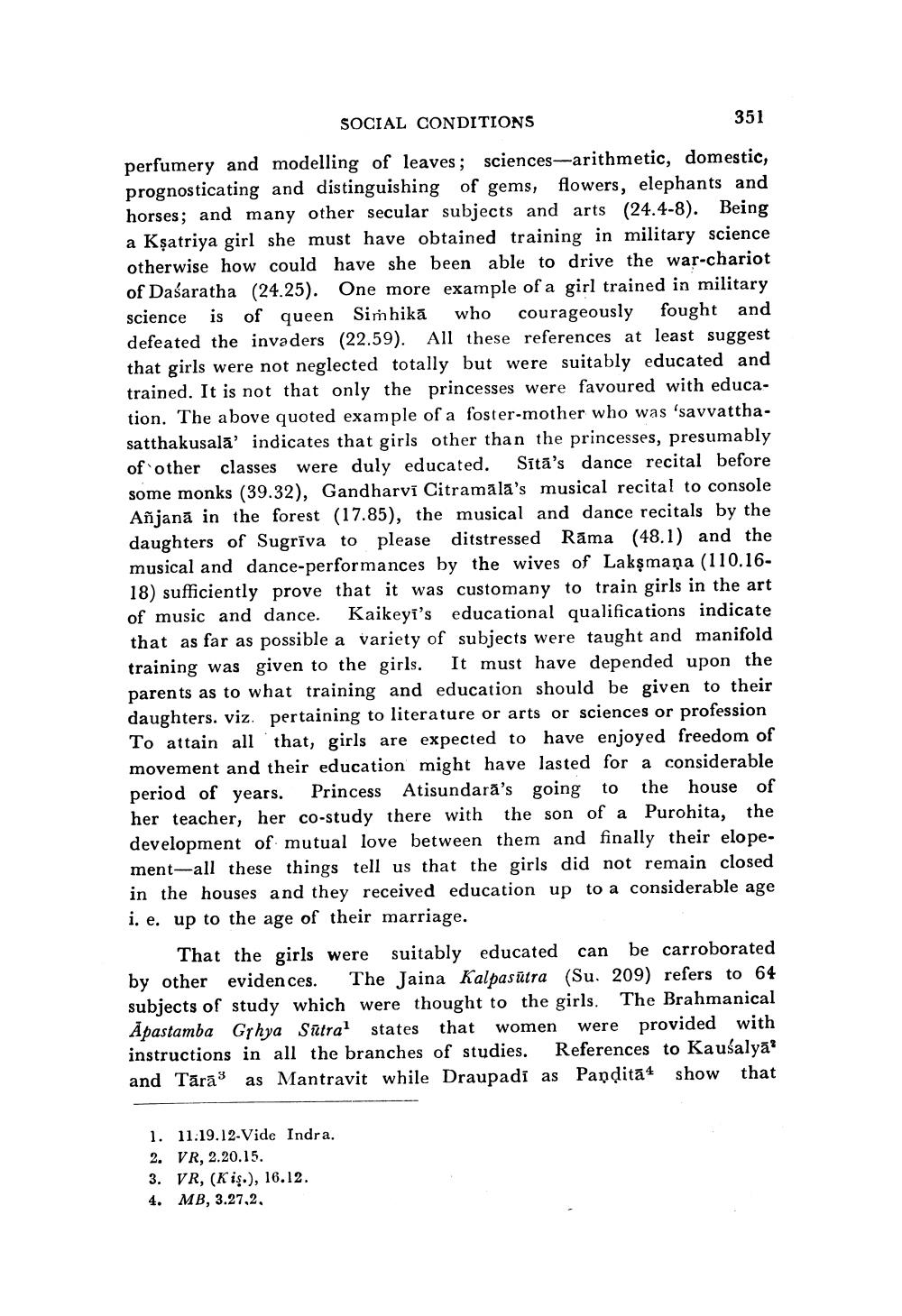________________
SOCIAL CONDITIONS
351
perfumery and modelling of leaves; sciences-arithmetic, domestic, prognosticating and distinguishing of gems, flowers, elephants and horses; and many other secular subjects and arts (24.4-8). Being a Kșatriya girl she must have obtained training in military science otherwise how could have she been able to drive the war-chariot of Dasaratha (24.25). One more example of a girl trained in military science is of queen Simhika who courageously fought and defeated the invaders (22.59). All these references at least suggest that girls were not neglected totally but were suitably educated and trained. It is not that only the princesses were favoured with educa. tion. The above quoted example of a foster-mother who was 'savvatthasatthakusalā'indicates that girls other than the princesses, presumably of other classes were duly educated. Sítā's dance recital before some monks (39.32), Gandharvī Citramala's musical recital to console Añjana in the forest (17.85), the musical and dance recitals by the daughters of Sugrīva to please ditstressed Rāma (48.1) and the musical and dance-performances by the wives of Lakşmaņa (110.1618) sufficiently prove that it was customany to train girls in the art of music and dance. Kaikeyi's educational qualifications indicate that as far as possible a variety of subjects were taught and manifold training was given to the girls. It must have depended upon the parents as to what training and education should be given to their daughters. viz. pertaining to literature or arts or sciences or profession To attain all that, girls are expected to have enjoyed freedom of movement and their education might have lasted for a considerable period of years. Princess Atisundarā's going to the house of her teacher, her co-study there with the son of a Purohita, the development of mutual love between them and finally their elopement--all these things tell us that the girls did not remain closed in the houses and they received education up to a considerable age i. e. up to the age of their marriage.
That the girls were suitably educated can be carroborated by other evidences. The Jaina Kalpasūtra (Su. 209) refers to 64 subjects of study which were thought to the girls. The Brahmanical Apastamba Grhya Satral states that women were provided with instructions in all the branches of studies. References to Kausalya' and Tārā3 as Mantravit while Draupadi as Panditā4 show that
1. 11:19.12.Vide Indra. 2. VR, 2.20.15. 3. VR, (Kiş.), 16.12. 4. MB, 3.27,2,




